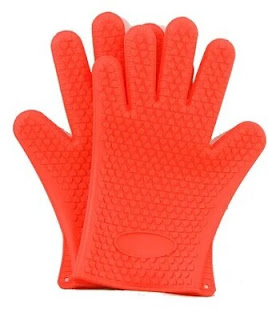Exploring the Diverse World of Tapes: Types and Applications
Exploring the Diverse World of Hardware Tapes: Types and Applications
Tapes are versatile and indispensable tools that find application in various industries and daily tasks. From securing packages to enhancing safety, tapes come in a myriad of types, each designed to serve a specific purpose. In this comprehensive guide, we will delve into the characteristics and applications of some common types of tapes, including barrier/warning tapes, double-sided tapes, luminous tapes, anti-slip tapes, cloth duct tapes, self-amalgamating tapes, self-fusion silicon tapes, PVC electrical insulation tapes, packing tapes, and masking tapes.
1. Barrier/Warning Tapes: Barrier or warning tapes
are highly visible adhesive tapes designed to communicate warnings, designate
boundaries, or identify hazardous areas. They are commonly used in construction,
industrial sites, and public spaces to prevent accidents, convey information,
and maintain safety protocols. Barrier tapes are available in various colors
and often feature bold text or symbols to convey specific messages, such as
caution, danger, or restricted access.
Applications:
- Marking off hazardous areas or construction
sites.
- Warning against potential dangers, such as
exposed wiring or wet floors.
- Designating restricted zones to prevent
unauthorized access.
2. Double-Sided Tapes: Double-sided tapes have
adhesive on both sides and are used to bond two surfaces together. They provide
a neat and discreet way of attaching objects without visible fasteners. These
tapes are available in various strengths and can be used for permanent or
temporary applications.
Applications:
- Mounting posters, photos, and artwork.
- Assembling lightweight crafts and projects.
- Attaching automotive accessories or interior
decorations.
3. Luminous Tapes: Luminous tapes, also known
as glow-in-the-dark tapes, absorb and store light energy and emit it gradually
in the dark. These tapes enhance visibility and safety during power outages or
in low-light conditions.
Applications:
- Emergency signage and exit path marking.
- Marking staircases, handrails, and emergency
equipment.
- Decorative applications in themed
environments.
4. Anti-Slip Tapes: Anti-slip tapes feature a
textured surface that provides traction and prevents slipping, making them
ideal for areas prone to moisture or foot traffic.
Applications:
- Securing walkways and stair treads.
- Reducing slip hazards on ramps and in
industrial settings.
- Enhancing safety on ladders and equipment.
5. Cloth Duct Tapes: Cloth duct tapes are
durable and versatile tapes that combine a cloth backing with strong adhesive.
They are commonly used for repairs, sealing, and bundling in both household and
industrial settings.
Applications:
- Patching and repairing items like torn bags,
hoses, and tents.
- Sealing ductwork and insulation.
- Bundling and securing cables or wiring.
6. Self-Amalgamating Tapes: Self-amalgamating tapes
are elastic and non-tacky tapes that fuse to themselves when stretched,
creating a waterproof and insulating seal. They are often used for electrical
and plumbing applications.
Applications:
- Insulating and sealing electrical connections.
- Protecting exposed plumbing pipes.
- Repairing hoses and pipes in emergency
situations.
7. Self-Fusion Silicon Tapes: Similar to
self-amalgamating tapes, self-fusion silicon tapes fuse to themselves when
stretched, creating a strong, flexible, and weather-resistant seal. They are
particularly useful in outdoor and automotive applications.
Applications:
- Emergency repairs on hoses, pipes, and wiring.
- Sealing and protecting outdoor electrical
connections.
- Wrapping handles for improved grip.
8. PVC Electrical Insulation Tapes: PVC electrical insulation
tapes are designed to insulate electrical wires and connections, providing
protection against short circuits and electrical hazards.
Applications:
- Insulating and securing electrical wires and
connections.
- Color-coding wires for easy identification.
- Repairing damaged insulation.
9. Packing Tapes: Packing tapes, also known as shipping tapes, are
used to seal boxes and packages for shipping and storage. They come in various
materials and strengths to suit different packaging needs.
Applications:
- Sealing and reinforcing cardboard boxes.
- Securely closing packages for shipping.
- Bundling items for storage.
10. Masking Tapes: Masking tapes are adhesive
tapes that are easily removable without leaving residue. They are commonly used
for painting and other projects where temporary protection is needed.
Applications:
- Masking off areas before painting.
- Creating clean paint lines and sharp edges.
- Temporary fastening for crafts and projects.
Conclusion: Tapes play a crucial role in a wide
range of applications, from enhancing safety to facilitating repairs and
creative projects. Understanding the characteristics and uses of different tape
types empowers individuals and industries to make informed choices for their
specific needs. Whether it's marking hazardous areas, securing packages, or
crafting works of art, the world of tapes offers a versatile toolkit for
various tasks




Comments
Post a Comment